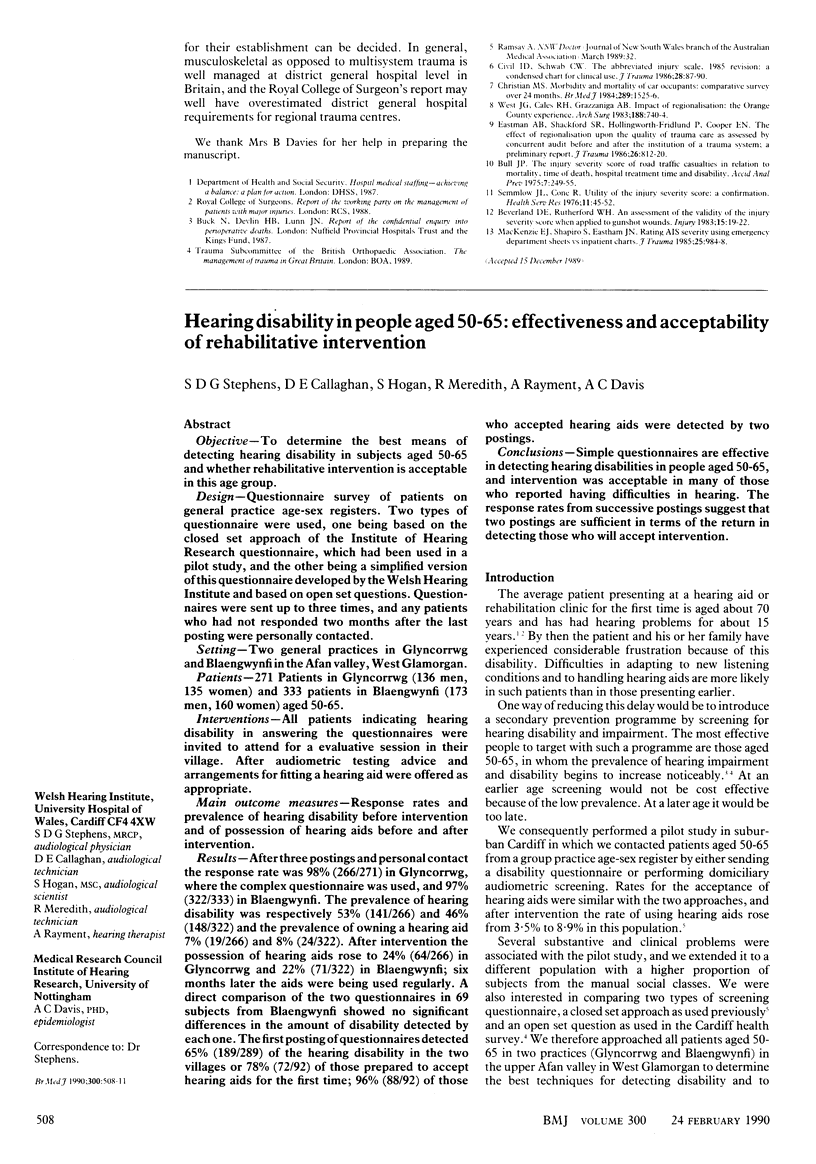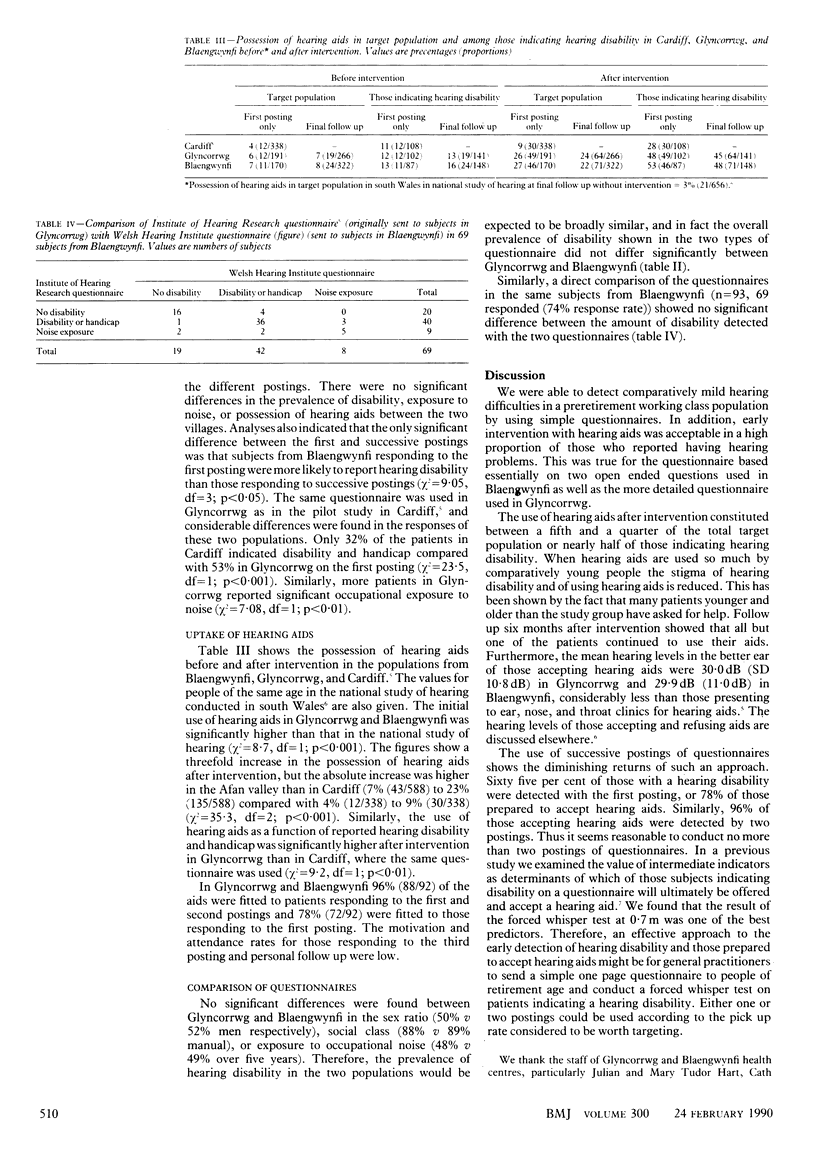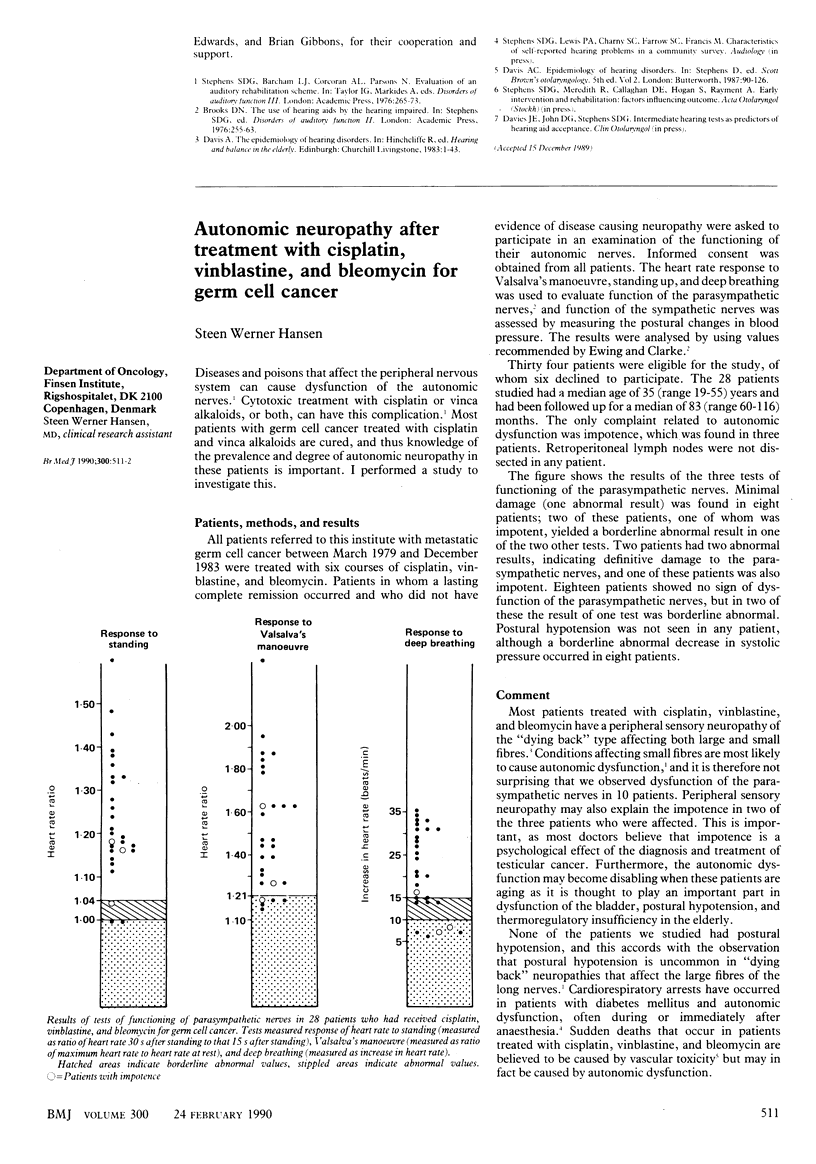Abstract
OBJECTIVE--To determine the best means of detecting hearing disability in subjects aged 50-65 and whether rehabilitative intervention is acceptable in this age group. DESIGN--Questionnaire survey of patients on general practice age-sex registers. Two types of questionnaire were used, one being based on the closed set approach of the Institute of Hearing Research questionnaire, which had been used in a pilot study, and the other being a simplified version of this questionnaire developed by the Welsh Hearing Institute and based on open set questions. Questionnaires were sent up to three times, and any patients who had not responded two months after the last posting were personally contacted. SETTING--Two general practices in Glyncorrwg and Blaengwynfi in the Afan valley, West Glamorgan. PATIENTS--271 Patients in Glyncorrwg (136 men, 135 women) and 333 patients in Blaengwynfi (173 men, 160 women) aged 50-65. INTERVENTIONS--All patients indicating hearing disability in answering the questionnaires were invited to attend for a evaluative session in their village. After audiometric testing advice and arrangements for fitting a hearing aid were offered as appropriate. MAIN OUTCOME MEASURES--Response rates and prevalence of hearing disability before intervention and of possession of hearing aids before and after intervention. RESULTS--After three postings and personal contact the response rate was 98% (266/271) in Glyncorrwg, where the complex questionnaire was used, and 97% (322/333) in Blaengwynfi. The prevalence of hearing disability was respectively 53% (141/266) and 46% (148/322) and the prevalence of owning a hearing aid 7% (19/266) and 8% (24/322). After intervention the possession of hearing aids rose to 24% (64/266) in Glyncorrwg and 22% (71/322) in Blaengwynfi; six months later the aids were being used regularly. A direct comparison of the two questionnaires in 69 subjects from Blaengwynfi showed no significant differences in the amount of disability detected by each one. The first posting of questionnaires detected 65% (189/289) of the hearing disability in the two villages or 78% (72/92) of those prepared to accept hearing aids for the first time; 96% (88/92) of those who accepted hearing aids were detected by two postings. CONCLUSIONS--Simple questionnaires are effective in detecting hearing disabilities in people aged 50-65, and intervention was acceptable in many of those who reported having difficulties in hearing. The response rates from successive postings suggest that two postings are sufficient in terms of the return in detecting those who will accept intervention.
Full text
PDF





